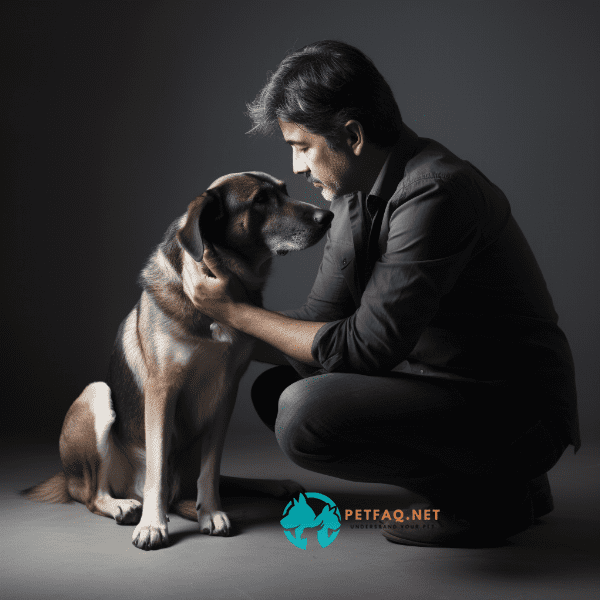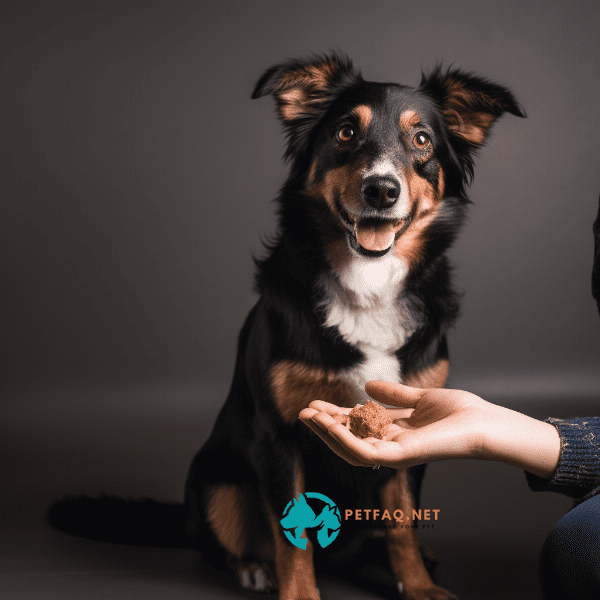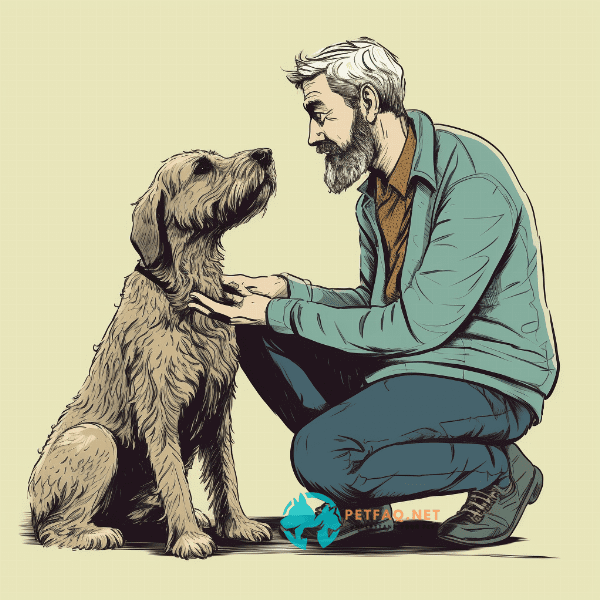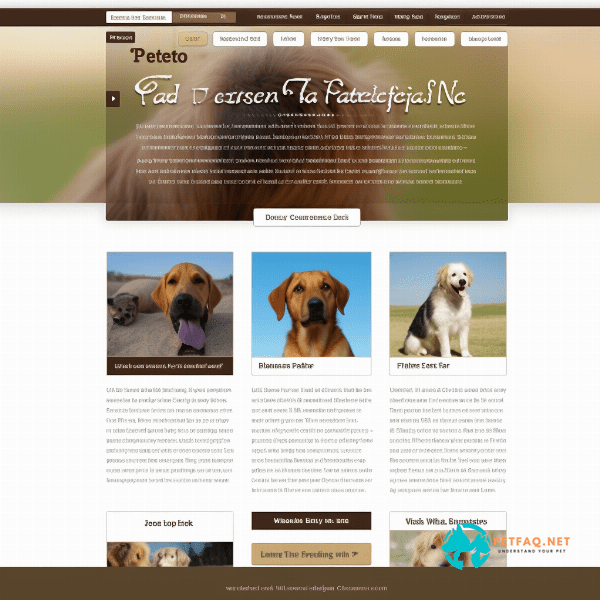Table of Contents
- Understanding Fearful Behavior in Dogs
- Building Trust with Your Fearful Dog
- Positive Reinforcement Training for Fearful Dogs
- Desensitization and Counterconditioning Techniques
- Managing Your Fearful Dog’s Environment
- Dealing with Specific Fear Triggers
- Consistency and Patience: Keys to Successful Fearful Dog Training
- Seeking Professional Help for Your Fearful Dog
Understanding Fearful Behavior in Dogs
As a pet owner, it is essential to recognize the signs of fear and anxiety in your dog. Fearful behavior in dogs can manifest in several ways, including shaking, panting, hiding, or even aggression.
It’s crucial to understand that fear in dogs is a natural response to perceived threats, and some dogs are more prone to anxiety than others. Understanding the cause of your dog’s fear is the first step towards addressing it.
In some cases, fearful behavior in dogs may be a result of a lack of socialization, traumatic experiences, or genetics. Therefore, it’s essential to provide your dog with positive experiences and training to boost their confidence and reduce their anxiety levels.
Fearful Dog Training should focus on creating a safe and supportive environment for your pet. This can include providing a consistent routine, setting boundaries, and using positive reinforcement techniques.
By understanding the root cause of your dog’s fear and implementing effective Fearful Dog Training techniques, you can help your pet become a happier, calmer companion. Remember, it takes time and patience to overcome anxiety in dogs, so be consistent and persistent in your efforts to help your furry friend feel more at ease.

Building Trust with Your Fearful Dog
Building trust is a crucial aspect of fearful dog training. A fearful dog may have experienced trauma or may have a natural disposition to anxiety. Therefore, trust must be established to help them feel safe and secure.
One of the best ways to build trust with your fearful dog is to establish a predictable routine. This can help them feel more comfortable and reduce their anxiety levels. Consistency in feeding, walking, and playtime can help build a sense of security for your pet.
Another effective way to build trust is through positive reinforcement training. This training technique involves rewarding your dog for good behavior, such as sitting on command or walking calmly on a leash. Positive reinforcement training helps build a strong bond between you and your dog and can boost their confidence.
It’s also important to respect your dog’s boundaries and avoid pushing them too hard. Gradual exposure to new environments, people, and other animals can help your pet build their confidence over time. However, forcing them into new situations can cause more harm than good.
Building trust with your fearful dog requires patience and consistency. It’s essential to understand that every dog is different, and progress may take time. But with positive reinforcement and a predictable routine, you can help your dog feel more secure and confident in their environment.
By building trust with your fearful dog, you can help them become a happier and more relaxed companion.

Positive Reinforcement Training for Fearful Dogs
Positive reinforcement training is an effective technique for fearful dog training. It involves rewarding your dog for good behavior, such as following a command or exhibiting calm behavior in stressful situations.
Positive reinforcement training is based on the idea that rewarding good behavior will increase the likelihood of that behavior being repeated in the future. This training technique helps to build trust and a positive relationship between you and your dog.
When training a fearful dog using positive reinforcement, it’s important to start with basic commands and gradually increase the difficulty level. This helps to build your dog’s confidence and reduce their anxiety levels. Rewards can be in the form of treats, praise, or playtime.
It’s essential to avoid punishing your dog for bad behavior, as this can exacerbate their fear and anxiety. Instead, redirect their attention to a positive behavior and reward them for that behavior.
Positive reinforcement training can also be used to desensitize your dog to fear triggers. This involves gradually exposing your dog to the fear trigger, such as loud noises, in a controlled and positive environment. With repetition and positive reinforcement, your dog can learn to associate the fear trigger with positive experiences.
Positive reinforcement training requires consistency and patience, but it can be a powerful tool in helping your fearful dog overcome their anxiety. By rewarding good behavior and building their confidence, you can help your dog become a happier, calmer companion.

Desensitization and Counterconditioning Techniques
Desensitization and counterconditioning are effective techniques for fearful dog training. These techniques involve gradually exposing your dog to the fear trigger while providing positive reinforcement to create a positive association.
Desensitization involves exposing your dog to the fear trigger in a controlled environment while gradually increasing the intensity of the trigger. For example, if your dog is afraid of loud noises, you can start by playing a recording of a quiet noise and gradually increase the volume over time.
Counterconditioning involves pairing the fear trigger with a positive experience, such as treats or playtime, to create a positive association. For example, if your dog is afraid of strangers, you can have a friend give your dog a treat every time they see them.
These techniques require patience and consistency, but they can be effective in reducing your dog’s anxiety levels. It’s important to start with a low-intensity fear trigger and gradually increase the intensity to prevent overwhelming your dog.
It’s also important to avoid forcing your dog into situations that make them uncomfortable. This can cause more harm than good and damage the trust and bond between you and your pet.
Desensitization and counterconditioning can be used in conjunction with other training techniques, such as positive reinforcement training, to help your fearful dog become a happier, calmer companion.
Remember, every dog is different, and progress may take time. But with patience and consistency, desensitization and counterconditioning techniques can be a powerful tool in helping your fearful dog overcome their anxiety.

Managing Your Fearful Dog’s Environment
Managing your fearful dog’s environment is an essential aspect of fearful dog training. Creating a safe and secure environment can help reduce your dog’s anxiety levels and promote positive behavior.
One of the best ways to manage your dog’s environment is to create a predictable routine. This can include feeding and walking your dog at the same time every day, and providing a comfortable and secure sleeping area.
You can also create a safe space for your dog to retreat to when they feel anxious or overwhelmed. This can be a crate or a designated area in your home that is free from noise and other distractions.
It’s also important to avoid exposing your dog to situations that may trigger their fear or anxiety. This can include loud noises, unfamiliar people or animals, or other stressful environments.
Managing your dog’s environment also involves providing mental and physical stimulation. This can include toys, puzzles, and games that promote positive behavior and reduce boredom and anxiety.
By managing your fearful dog’s environment, you can help create a safe and secure environment that promotes positive behavior and reduces anxiety levels. Remember, every dog is different, and it’s essential to tailor your management strategies to your pet’s specific needs.

Dealing with Specific Fear Triggers
Dealing with specific fear triggers is a critical aspect of fearful dog training. Identifying and addressing the specific triggers that cause your dog’s anxiety can help you develop a targeted approach to training and behavior modification.
Common fear triggers for dogs include loud noises, strangers, other animals, and unfamiliar environments. To address these triggers, you can use a combination of desensitization and counterconditioning techniques.
For example, if your dog is afraid of loud noises, you can gradually expose them to the noise while providing positive reinforcement, such as treats or playtime. This can help your dog create a positive association with the noise and reduce their anxiety levels over time.
If your dog is afraid of strangers, you can have strangers offer treats or engage in playtime with your dog to create a positive association. You can also work on gradually increasing the duration of the interaction to help build your dog’s confidence.
It’s important to remember that fearful dog training requires patience and consistency. Every dog is different, and progress may take time. It’s also important to avoid forcing your dog into situations that make them uncomfortable, as this can damage the trust and bond between you and your pet.
Dealing with specific fear triggers requires a targeted approach that addresses your dog’s specific needs. By using desensitization and counterconditioning techniques, you can help your fearful dog overcome their anxiety and become a happier, calmer companion.

Consistency and Patience: Keys to Successful Fearful Dog Training
Consistency and patience are the keys to successful fearful dog training. Fearful dogs require a calm and consistent approach to training that focuses on building trust and positive reinforcement.
Consistency is essential in fearful dog training because it helps your dog understand what is expected of them. Establishing a predictable routine and using consistent commands and rewards can help your dog feel more secure and reduce their anxiety levels.
Patience is also critical in fearful dog training because progress may take time. Fearful dogs may need extra time and support to overcome their anxiety, and it’s important to be patient and persistent in your efforts.
It’s also important to avoid using punishment or forceful techniques, as this can exacerbate your dog’s anxiety and damage your relationship with your pet. Instead, focus on building trust and communication with your dog to help them feel more comfortable and secure.
In addition to consistency and patience, it’s essential to tailor your training techniques to your dog’s specific needs. Every dog is different, and fearful dog training requires a targeted approach that addresses your pet’s specific triggers and behaviors.
Seeking professional help from a certified dog trainer or veterinary behaviorist can also be beneficial in developing a successful training plan for your fearful dog.
Remember, fearful dog training requires a calm and consistent approach that focuses on building trust and positive reinforcement. With consistency, patience, and a targeted approach, you can help your fearful dog become a happier, calmer companion.

Seeking Professional Help for Your Fearful Dog
If you’re struggling with fearful dog training, seeking professional help can be beneficial. Certified dog trainers or veterinary behaviorists can provide expert guidance and support to develop a training plan tailored to your dog’s specific needs.
Professional help can be especially useful if your dog’s fear and anxiety levels are severe or if you’re struggling to make progress with your current training techniques. A professional can evaluate your dog’s behavior, identify specific triggers, and develop a customized training plan that addresses your pet’s specific needs.
Professional trainers and behaviorists can also provide valuable advice on managing your dog’s environment, building trust, and using effective training techniques, such as desensitization and counterconditioning.
It’s essential to choose a qualified and experienced professional to ensure that your dog receives the best possible care. Look for a trainer or behaviorist who has experience working with fearful dogs and uses positive reinforcement training techniques.
In addition to seeking professional help, it’s important to continue your efforts to support your dog’s training and behavior modification. Consistency, patience, and a targeted approach can help your fearful dog overcome their anxiety and become a happier, calmer companion.
Remember, fearful dog training requires a tailored approach that addresses your pet’s specific needs. With professional help and a commitment to consistency and patience, you can help your fearful dog overcome their anxiety and live a happier, healthier life.

Frequently Asked Questions (FAQs) about Fearful dog training:
1. Are there any risks associated with training a fearful dog?2. How can a dog owner maintain a fearful dog's progress and prevent relapses in their behavior?
3. Can medication be helpful in training a fearful dog?
4. Can fearful dogs be trained to overcome their fears and become more confident?
5. How important is socialization for a fearful dog?



